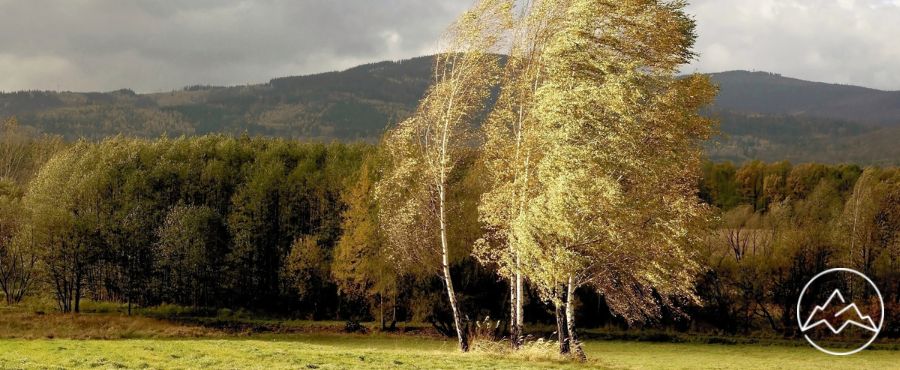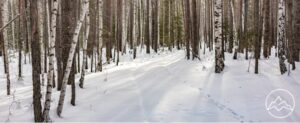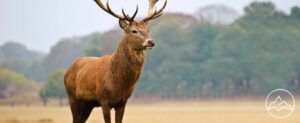Deer hunting is a popular pastime, but knowing when to hunt is hotly debated. There are a lot of variables; deer activity has a lot to do with weather conditions. Wind speed is one of the most significant variables, many hunters even aim to hunt on days of a light breeze. Wind can be helpful for hunters, and some wind can increase activity.
It’ll displace more bucks than does, so you’ll have a good chance of scoring a mature buck. You’ll have the best luck when the wind is between 5 and 15mph. It’s possible to hunt with winds over 15mph, but it gets more complicated when the winds tip 30 mph. Hunting in high winds has unique challenges. The wind conditions can tell you whether a hunt is likely fruitful. Before you decide, there are some key aspects to take into account.
How does wind affect deer movement?
Whitetail deer are very weather sensitive. A small change in barometric pressure can have a significant impact. Many hunters believe that deer stop moving and take shelter in the wind. But several studies challenge that idea; the opposite could be true. Deer can move further when the wind is blowing strongly. Research from Penn State University turned up interesting results. They named three categories, calm (winds under one mph), moderate (1-15mph), and strong (16-30mph.)The findings were clear; deer move more often in strong winds. The more winds recorded, the more movement was recorded. But there were other results from the study. First, surprisingly, the wind affects the sexes differently. Does were less likely to move on windy days, and they traveled shorter distances. But buck movement increased.
The wind encourages deer to move more, up to around 30mph. Above 30mph, it stifles movement and creates other complications for bowhunters, so it’s not recommended to hunt at these times. Complications of hunting deer in high winds include discomfort/general difficulty moving around, potential damage to your hunting gear, and the possibility that your arrows will be blown off course. On the whole, it’s just not a great idea.Why does the wind affect deer?
Scientists are trying to figure out exactly why the wind affects deer, particularly in the face of mounting evidence that deer move more frequently in higher winds.
Some theories speculate that it could be linked to a sense of danger. It’s easy to detect sounds, scents, and other stimuli in low winds. In higher winds, they can’t detect much. They may feel more vulnerable and spend time on the move in the face of this threat.
Others speculate that it’s linked to weather events at large. Deer are known to be more active when a cold front is approaching; this is their cue to get ready to take shelter. Before taking cover, they’ll need to gather food. High winds could be a warning signal for the onset of a cold front.
How can you hunt in high winds?
We can spend all day talking about why this is happening, but the main takeaway is it’s happening. High winds present a great opportunity for whitetail deer hunters. But how can it be taken advantage of?
First things first, work on your strategy. Many hunters rely on tree stands, but this isn’t ideal during high winds. You could fall out of your stand, or the shaking caused by the wind could damage your stand. At best, you’re more visible to deer; at worst, you’re knocked out of your stand or injured.
Next up is the location. You should explore natural windbreaks. Thicker trees, swamps, and other natural spots can provide a break from the wind. Most deer will be moving towards lower wind or calmer locations.
Heavy winds can suppress activity at night, but after a windy night, deer will hunt more. You should keep a close eye on feeding grounds after a night of heavy wind.
Another key benefit is the deer’s sense of smell. Deer have very sensitive noses; if they detect human scents, they’ll leave the area. You can do many things to obscure your scent, but one of the benefits of hunting in the wind is that your smell is more easily blown away so long as you hunt downwind. To be sure you’re hunting downwind, you can release some chalk to confirm the wind direction; this ensures your scent disperses before it gets to the deer. Just be careful on the days with light wind. In a light breeze, the direction can change in a split second. If the wind direction changes while you’re stalking a deer, a gust of wind can ruin your hunt before you get close enough to line up a kill shot. These days, carry an odor-neutralizing spray.
How does wind affect bowhunting?
Bowhunting and archery are increasing in popularity, but with them comes unique challenges. Bowhunters can be more affected by wind changes than rifle hunters. Your arrow can be blown off course, and it isn’t easy to aim effectively. There are a few hunting strategies to make your life easier.
First, try and get as close as possible before taking a shot. The less distance your arrow has to travel, the less chance it’ll be blown off course.
Getting closer to a deer may seem difficult, but it’s easier when there’s wind, as the sound and smell of your approach are more easily obscured.
But you should still practice in high winds before a hunt. You can practice with a target beforehand; you need to learn how far away you can be while still making an accurate shot. You may also need to adjust your aim, aiming slightly above or to the left/right. Practicing will help you change your aim to get the best shot.
If it’s raining or there are high winds, you should consider purchasing good-quality hunting goggles or glasses. This will stop debris from entering your eyes while aiming at your target.
The most important tip is to use a bow with the highest draw weight that you can manage. The more force behind the arrow, the better, as it’ll travel faster. A faster arrow is harder to blow off course. You can also use a heavier arrow which increases velocity. Higher velocity requires a higher amount of force to change the trajectory.FAQs about Deer Hunting with Windy Conditions
What wind speed is considered too much for deer hunting?
How can hunters assess wind conditions prior to a hunt?
Are there any strategies that hunters can use to minimize the effects of high winds while hunting?
Does having an elevated stand help reduce the effects of strong winds on deer hunting success?
In what kind of terrain is it more difficult to hunt in high winds?
Conclusion
During whitetail hunting season, high winds can be a blessing. Whitetail movement is proven to increase during moderate winds. It’s a popular theory that deer will bunker down and stop moving on a windy day, but studies prove otherwise.
You’ll want to look for windy conditions where the wind is below 20mph, but you’ll need to be prepared with any required extras, such as a bow with high draw weight, odor neutralizers, and heavier arrows. If you prepare well, you’ll have a successful bow hunt regardless of the high winds!










